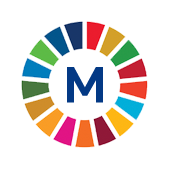 12.4.2b Proportion of hazardous waste treated, by type of treatmentMetadataPeriod: Every two yearsYear: 2025 |
 12.4.2b Proportion of hazardous waste treated, by type of treatmentMetadataPeriod: Every two yearsYear: 2025 |
| METADATA |
| Indicator information |
| Definition and methodology |
| Data source type and data collection method |
| Notes |
| ID of global indicator |
| Metadata update |
| Global metadata |
| Indicator information | Top |
| Indicator | |
12.4.2b Proportion of hazardous waste treated, by type of treatment | |
| Global indicator name | |
12.4.2 (a) Hazardous waste generated per capita; and (b) proportion of hazardous waste treated, by type of treatment | |
| Target | |
12.4 By 2020, achieve the environmentally sound management of chemicals and all wastes throughout their life cycle, in accordance with agreed international frameworks, and significantly reduce their release to air, water and soil in order to minimize their adverse impacts on human health and the environment | |
| Goal | |
Goal 12. Ensure sustainable consumption and production patterns | |
| Definition and methodology | Top |
| Definition | |
The indicator includes hazardous waste generated and the share of hazardous waste treated.
Treated hazardous waste: refers to hazardous waste treated during the reporting year, by type of treatment (recycling, incineration with/without energy recovery, landfilling or other), including export and excluding import. | |
| Methodological explanations | |
Data on waste generated and treated are collected through statistical waste surveys and from administrative sources.
The survey covers all sectors of economic activity. Household waste is estimated from data taken from administrative sources. In the survey on treated waste, data are collected by type of treatment from all operators licensed to carry out one or more activities in the field of waste management (collection, transport, storage, treatment, disposal). | |
| Method of calculation | |
Hazardous waste generated includes hazardous waste collected (either by specialized companies or municipal services), hazardous waste delivered directly by the producer to a treatment or disposal facility, and an estimate of hazardous waste not accounted for.
Hazardous waste generated includes exported hazardous waste and excludes imports of hazardous waste. The total amount of hazardous waste treated during the reporting year is calculated by summing the amounts of hazardous waste treated, by each type of treatment (recycling, incineration with/without energy recovery, landfilling or other), including exports and excluding imports. Share of treated hazardous waste: The amount of treated hazardous waste during the reporting year, divided by the amount of hazardous waste produced and multiplied by 100. | |
| Unit of measure | |
% | |
| Available disaggregation | |
Waste treatments | |
| Territorial level | |
Republic of Serbia | |
| Data source type and data collection method | Top |
| Data source | |
Statistical Office of the Republic of Serbia | |
| Periodicity of data collection | |
Every two years | |
| Notes | Top |
| ID of global indicator | Top |
C120402 | |
| Metadata update | Top |
| 3/6/2025 | |
| Global metadata | Top |
https://unstats.un.org/sdgs/metadata/files/Metadata-12-04-02.pdf | |